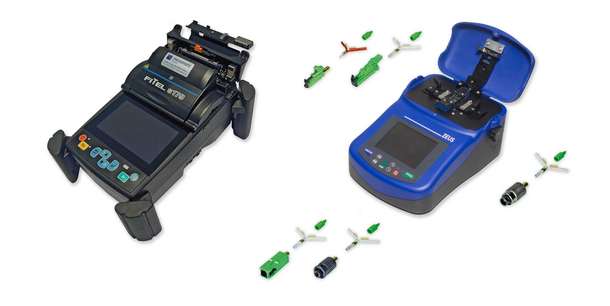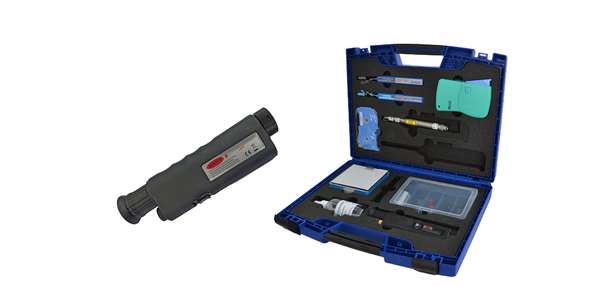- DIAMOND SA | Fiber Optic Assemblies
- High quality fiber optic components
- Splice, Termination & Inspection
Fiber Optic Splicer
The joining or welding of fiber optic cables is called Fiber Optic Fusion splicing. It is used when pieces of fiber are to be joined together to achieve a desired length, or when a Fiber Optic Repair is due. To Splice is a laborious activity that requires concentration, accuracy and the right equipment. In principle, optical fibers can be connected mechanically with connectors or by means of fusion splicing. It is always important that the light-conducting cores are precisely aligned with each other so that the greatest possible performance of the optical fiber pieces to be connected is maintained. Fusion means that no other materials are used in the splicing process apart from the two optical fibers.
The procedure for Fiber Optic Splicing
The glass fibers are optimally adjusted in the splicer and then fused together transparently by an electric arc. This is done by an arc passing between the fiber sections and melting the glass. The two fiber optic cables then form a solid unit. When done properly, this process causes little loss in performance of the overall cable. The resulting attenuation values should not be higher than 0.1 dB. Top values are less than 0.02 dB.
Easy-to-use fiber optic field devices from Diamond
Diamond's field splicing includes solutions for fast, reliable fiber terminations and testing, while maintaining maximum functionality, flexibility and ease of use for installers. Diamond recommends a range of components and equipment that are perfectly suited to Fiber Optic Splicing our products and can guarantee the low tolerances of our attenuation values when the splicing process is carried out correctly. These include the FITEL S179 for telecom applications. Other products include the connector tool set as well as various Optical Measurement Technology products and accessories such as cleaning kits, fiber optic tools, test cables and video and handheld inspection microscopes. The latter have an axis-parallel and an indirect illumination mode, resulting in excellent image quality when inspecting fiber optic end surfaces. Thanks to the rubber eyecup, the microscope adapts ergonomically to the eye and prevents lateral light irradiation. Active inspection of fiber optic networks for contamination and, if necessary, cleaning and repair are effective measures to maintain signal performance at a high level and prevent network downtime.





